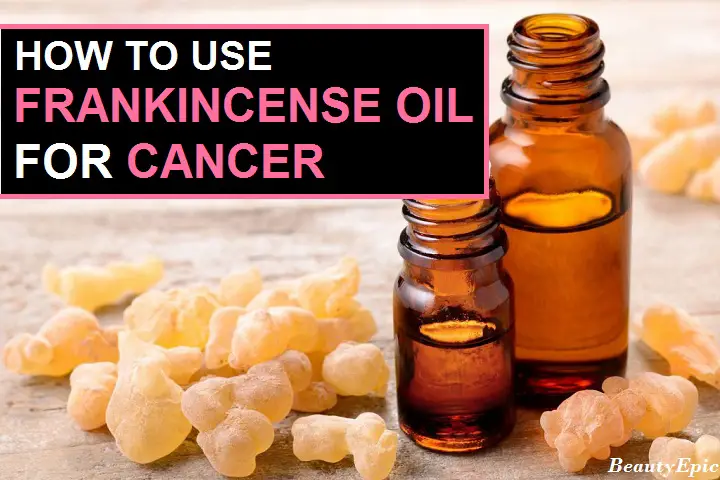
Important: This article is for informational purposes only. Please read our full disclaimer for more details.
Cancer is a dangerous and deadly disease. It is today a common problem among people of specific age. But do you know, frankincense oil is a wonderful element in fighting cancer? Deemed as a natural treatment for cancer, frankincense oil has been used for ages to strengthen the immune system and cure diseases. Several researches and studies find that frankincense oil has huge potential to fight cancer. Using frankincense oil for cancer cure is an old yet effective method.(1)
What Does Frankincense Oil Do for Cancer?
Basically frankincense oil is derived from Boswellia Carteri species, that have anti-inflammatory and anti-tumour properties. Various researches find that boswellia has parts of a compound known as AKBA or the acetyl-11-keto-beta-boswellic acid. AKBA is an effective element against cancer. Frankincense oil is quite Cogent in the treatment of breast cancers, colon cancers, and Prostate cancers.(2)
Frankincense oil has a number of other benefits as well, which are directly and indirectly linked with the treatment and prevention of cancer.
- Increase immunity
- Fight inflammation causing diseases
- Relieve stress
- Prevent body from Dangerous infections
- Reduce the signs of aging
Increasing immunity of body is one of primary benefits of frankincense oil. A better immune function not only prevents body from growing cancerous cells but also fights with them. In addition to treat cancer , Frankincense oil also brings the feelings of peace and relief when diffused into air.
[ Read: Can Apple Cider Vinegar Fight Cancer ]
How to Use Frankincense Oil for Cancer
Since injection of frankincense oil is not advisable, we can take it by preparing a solution mixing with coconut oil or jojoba oil. Also applied the frankincense oil tumors is a good practice.
Ingredients:
- 1 tsp of carrier oil
- 2 drops of frankincense oil
Preparation time: The solution will be prepared within a minute.
Procedure:
- Add one drop of fragrance oil with a 1 teaspoon of a carrier oil (such as coconut oil or jojoba oil), and consume in morning as the first thing.
- To fight oesophageal irritation put one or two drops of frankincense oil in a soft gel capsule.
- Apply the diluted frankincense directly on the tumor, and at the bottom of the feet. To have great results, use the solution of two drops of carrier oil with One drop of frankincense oil.
Normal dosage: Ingestion of the frankincense oil is advisable for 2 to 3 weeks.
How it works: Frankincense oil kills the cancerous cells when they are exposed to the oil. A proper usage will have great benefits.
Tips: Do not directly ingest the frankincense oil, and discontinue the solution usage immediately upon signs of adverse reactions.
Frankincense oil has huge potential in treating the cancer. It has various compounds which works accordingly against several cancer cells. Not just cancer, frankincense oil is quite effective in diseases such as gastroenteritis, asthma and skin problems. Due to its anti-inflammatory properties, it has quite easy usage and huge efficiency. Frankincense oil is a natural, cost less and productive method for the treatment of cancer.
You Might Also Like:
- How to Use Turmeric for Cancer
- 7 Essential Oils for Cold: How To Use Them
- 6 Best Essential Oils For Bell’s Palsy
Image:- 1















